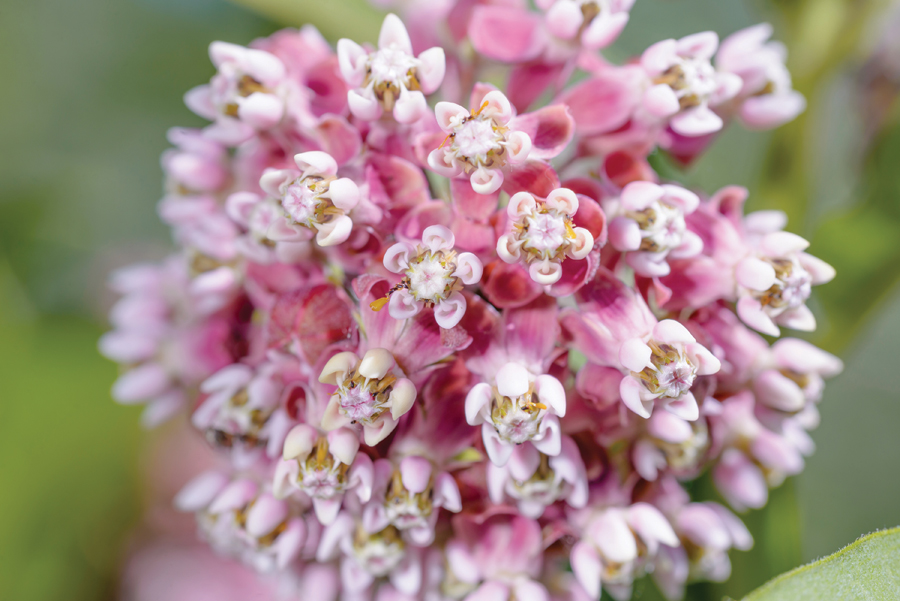Make Your Garden a Twilight Retreat
01 Jul 2016
When planning a garden, don’t neglect the things you can do to make it a twilight delight.
By Lia Leendertz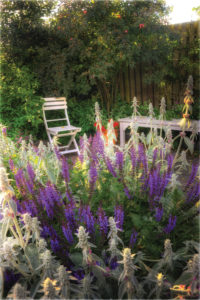
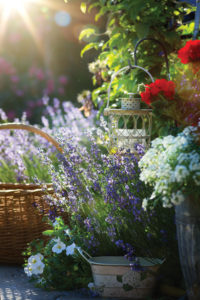
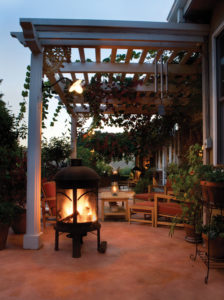
A Step at a Time
The first step is to look at the plants and hard landscaping features that are already in your garden and think about what you want to keep and what you really can’t live with. It is always simpler to work around existing features. The next step is to measure out the available space and make a scale plan of your garden on paper. Include all the features you intend to keep, and note whether the garden is north-facing, west-facing and so forth, as this will affect your plant choices. Now you’re ready to put any new hard landscaping in place—paths, patios, pergolas and arbors. There are many night-scented climbing plants to choose from, so try to include as many structures for them to clamber over as you possibly can.
Finally comes the new planting. As a quick rule of thumb, put any structural planting in first—hedges, topiary, trees and shrubs—and fill in with other, more ephemeral plants. Structural planting is really an autumn and winter job, as these plants need masses of soil preparation to get their roots into the soil during cool and wet times of the year. More ephemeral planting can be done at other times of the year, but you will find yourself doing a huge amount of watering if you plant at the height of summer, so try to avoid this.
Now you’re ready to put any new hard landscaping in place—paths, patios, pergolas and arbors. There are many night-scented climbing plants to choose from, so try to include as many structures for them to clamber over as you possibly can.
Finally comes the new planting. As a quick rule of thumb, put any structural planting in first—hedges, topiary, trees and shrubs—and fill in with other, more ephemeral plants. Structural planting is really an autumn and winter job, as these plants need masses of soil preparation to get their roots into the soil during cool and wet times of the year. More ephemeral planting can be done at other times of the year, but you will find yourself doing a huge amount of watering if you plant at the height of summer, so try to avoid this.
Other Considerations
Before you put in a single plant, think about how you are going to use your garden and how much time you have to garden. Is yours a front garden or a back garden? Is it going to be a family garden or a party garden? Is it going to be a calm, relaxing, solitary space? If it’s a family garden, you might want to include a lawn, a sandbox or other play equipment. If it’s a party garden, you’ll need a decent-sized deck or patio. If you’re more of a gourmand, then it might make sense to invest in a good, solid table and chairs, and to make your table setting the focus of the garden. If it’s a quiet-time garden, think about comfortable seating and large screening plants to make you feel tucked away and private. Another consideration is whether you want to spend lots of time tending plants or whether a low-maintenance garden, filled with shrubs and other plants that require little care once established, would suit you and your lifestyle better. Once you’ve answered all these questions, here are things to consider to make a garden come alive at twilight.Moonlit Colors
All the finest moonlit gardens are filled with white, silver and palest yellow plants. Silver-leafed plants are effective reflectors of low light, and paler versions of blues and purples also tend to leap out of the dark. But consider how much you use the garden during the day. Lots of white can be overpowering on a bright sunny day.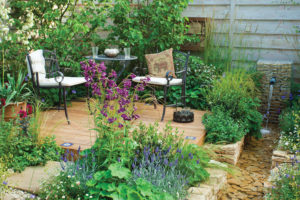
Heady Scents
So many of the plants that look good at night also have delicious nighttime fragrances. The fragrance of evening primrose, lily, honeysuckle and many other plants moves up a gear as evening falls. Some plants, like night-scented stock (Matthiola bicornis), only emit their scent at night. Surround your evening seating area with pots of scented plants so you are guaranteed a big hit of fragrance. Lilies and dianthus grow well in containers, but don’t forget to put some fragrant plants, like climbing roses and honeysuckle, in the farther reaches of the garden. Fragrant lavender and shrub roses work well as borders along pathways.
Surround your evening seating area with pots of scented plants so you are guaranteed a big hit of fragrance. Lilies and dianthus grow well in containers, but don’t forget to put some fragrant plants, like climbing roses and honeysuckle, in the farther reaches of the garden. Fragrant lavender and shrub roses work well as borders along pathways.
Subtle Lighting
Night gardens should be about mystery and intrigue, and having too much in the way of electric lighting makes all intrigue go out the window. Flameless candles, storm lamps, votives, solar-powered lights, lanterns and ropes of tea lights wrapped around pergolas, bannisters or railings all create a beautifully soothing effect. Electric lighting is best used to create effects, like accenting a particular shrub, or a feature like a large urn in a border, or a textured wall or other surface.Terrific Trickles
A small fountain trickling away in the darkness creates a wonderful atmosphere, and subtly masks noises coming from outside the garden. Another feature to consider is a “moon-gazing pond.” Create one by placing a basin with a dark interior somewhere in a fairly open spot so the pool will reflect the moon and stars unimpeded. You’ll need to change the water frequently, so it doesn’t stagnate.Get Wild
Your garden will be a more interesting place if you encourage wildlife to visit it. Good nectar sources for moths are nicotiana, evening primrose, honeysuckle and sweet rocket. Planting native wildflowers and simple, cottage-style perennials, as opposed to highly bred bedding plants, does a better job of attracting insects that bats can feed on at night. And a water source, like a birdbath, is attractive to all types of wildlife.Sound Ideas
As mentioned, a trickling water feature is a wonderful addition to any garden. But if you want something less expensive and easier to set up, hang wind chimes. Plants can join in, too. Nandina domestica is commonly known as “heavenly bamboo,” despite not actually being a bamboo at all. Its leaves make a particularly papery, rustling sound.Surround Yourself
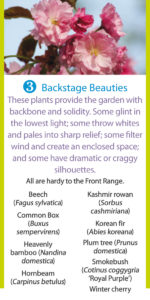 An open, airy garden can be a lovely thing, but it doesn’t make for the ideal night garden. If you want to make the most of night-scented plants, you have to close off the outside world and create a still pool of air where the fragrances will be trapped and linger and mingle for as long as possible. A sense of enclosure also helps you to feel safe and hidden away after dark. Tall, dense hedges and taller trees should be your first line of defense. They will also filter much of the wind that attempts to blow away your nighttime fragrances.
Dramatic silhouette plants also have their place in the nighttime garden. Position a few spiky, craggy plants on your garden’s boundaries and enjoy the impressive shapes they make against the failing light of the evening sky.
An open, airy garden can be a lovely thing, but it doesn’t make for the ideal night garden. If you want to make the most of night-scented plants, you have to close off the outside world and create a still pool of air where the fragrances will be trapped and linger and mingle for as long as possible. A sense of enclosure also helps you to feel safe and hidden away after dark. Tall, dense hedges and taller trees should be your first line of defense. They will also filter much of the wind that attempts to blow away your nighttime fragrances.
Dramatic silhouette plants also have their place in the nighttime garden. Position a few spiky, craggy plants on your garden’s boundaries and enjoy the impressive shapes they make against the failing light of the evening sky.
Lia Leendertz is a gardening columnist for The Guardian and a regular contributor to The Garden magazine, published by the Royal Horticultural Society. This article is excerpted and adapted from her book, The Twilight Garden (Ball Publishing/Independent Publishers Group).


